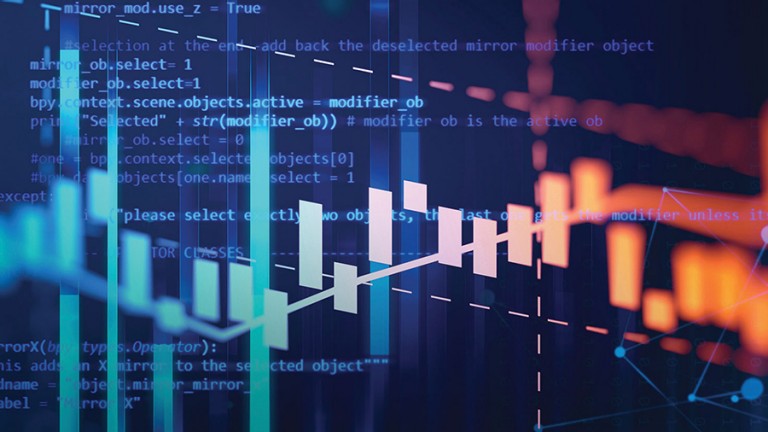Now that state and local tax jurisdictions can levy taxes on digital sales of goods and services within their boundaries, do corporate tax departments have the right technology to comply?
The 2018 decision by the U.S. Supreme Court in South Dakota v. Wayfair established that states can require businesses without a physical presence in that state to pay in-state taxes. Yet, few people could have foreseen the ruling’s impact on almost every business in the years since the decision and beyond.
The Wayfair ruling opened the door for states to later receive record amounts of sales tax during and after the pandemic as people shopped mostly online. Wayfair created an economic nexus in virtually every state and local tax (SALT) jurisdiction.
Given the current state of the internet of things (IoT) — the connectivity of almost every aspect of our lives — means that there is almost no industry that isn’t impacted by IoT. And this has created income opportunities for SALT jurisdictions, which, after Wayfair, were able to determine what items are taxable, going beyond a physical product like a hammer or a pair of pants and extending it software and code, as well as to services including communication and technology.
In some cases, the taxability of these transactions isn’t as straight forward as one would assume, consider free trials, what is the value of the goods or services there that have been exchanged? Because in many ways tax regulations have not caught up to modern-day goods and services, allowing SALT jurisdictions to get creative in how they apply the antiquated tax laws to businesses inside or outside their state.
The challenge to calculating taxes on items like digital automated services, computer service, information or communications services, is when they are treated like traditional goods. The Multistate Tax Commission is continuously working to determine what is considered a digital good, as well as how such digital goods are to be categorized. Add to this, the digital advertising tax, which currently holds that the digital advertising gross revenues tax of between 2.5% and 10% is imposed on entities that have global annual gross revenues of at least $100 million and deriving gross revenues from digital advertising in Maryland of at least $1 million. Although this tax requirement has only been rolled out and contested in Maryland, more than 10 other states are considering similar legislation, such as Massachusetts, which has various used approaches to taxing digital advertising including a gross receipts tax and an excise tax. The state is making a further a study of how best to tax such activity.
The challenge of time & resources
Not surprisingly, time and resources are the biggest challenges for many tax preparers. For corporate tax departments navigating the changes in tax regulations — especially around understanding how the classification of digital items are taxed — it’s more important than ever to ensure their data management is compliant. Tax departments need a strategy to organize data because failure to do so could provide risks, including subjecting the business to potential audits. The strategy requires consideration of technology that the company currently may have or may acquire and looking at the following three factors: data, workflow, and end-to-end automation. Assessing a tax department’s current technology stack and having an understanding of what technologies and corresponding processes are in place is necessary in order to get into compliance from the start. Firms should consider the following three factors in this technology and process assessment:
1. Data management — Knowing what technology is used in accordance with which process in step-by-step way is critical. Making sure such processes are streamlined, and that whichever software or application used can connect to multiple sources in order to gather and format the data to where it is then most easily usable.
2. Workflow — Having the right technology will also be determined by the people and their talent level. Indeed, having the best technology will only be as good as the people that are using it. Right-skilling your teams is foundational and allows for the team to create project pipelines that can be measured against key performance indicators (KPIs) which can in turn help provide a clear picture of the tax department’s value to the overall business. This overall picture can be leveraged to influence the company’s future spending on tax technology and other department needs.
3. End-to-end automation — Most tax departments have stated that there still is a relatively large amount of manual work that takes place. Manual works causes some of the highest inefficiencies within the department, including using more time and having a larger potential for mistakes being made. The most ideal situation is to have technology that provides end-to-end automation, limiting the amount of manual work needed. Using technology such robotic processing automation (RPA) to execute structured, repeatable, and logic-based tasks that mimic the actions taken by existing human staff, will free up staff to perform more analytical and strategic work that provides additional value to the team and business.
The general consensus is that the tax landscape will not become less complex and that SALT governments will continue to look for creative ways to generate more revenue. In fact, the state-level enactment changes to Section 174 that took effect last year further adds to the work and complexity that a corporate tax department will need to navigate.
In fact, tax department leaders would be smart to form a strategic plan — along with the necessary technology — that will allow them to gather and manage their company data while finding a way to analyze the data faster and more accurately.







